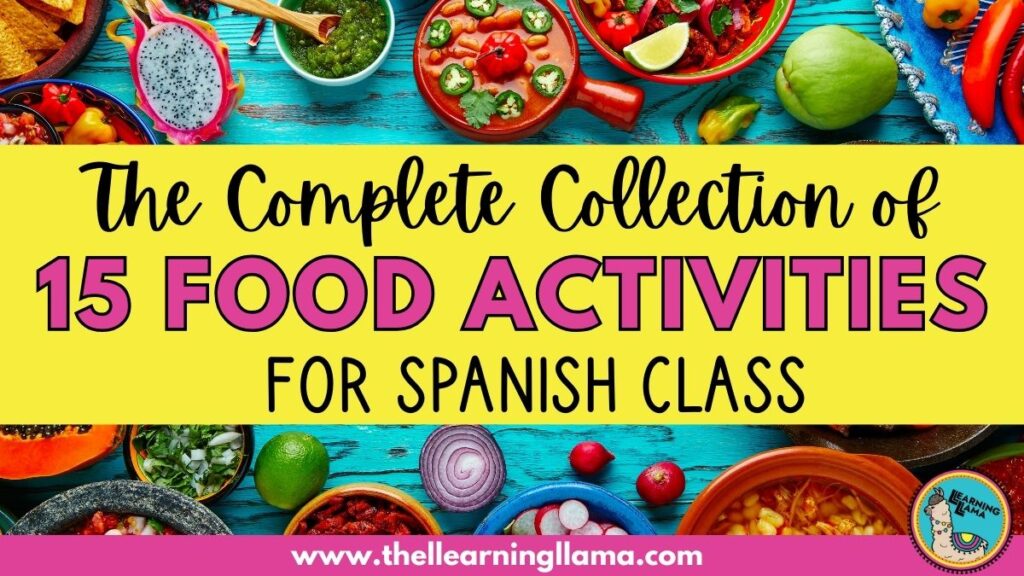Everybody loves teaching about food in Spanish class! It is also one of our students’ favorite units. But I always found that a food unit with vocabulary that focused on common American food like hamburguesas y papas fritas was pretty boring. Yes, our students need to know vocabulary that is of interest to them, but Spanish-speaking countries are overflowing with traditional foods that we should want to share with our students! The ideal unit for teaching about food in Spanish class would include a combination of both types of lessons. So, keep reading to see my complete collection of activities to teach about food in Spanish class.
1. Mi Plato
Mi plato is the new food pyramid. Help your students identify and categorize healthy food choices. They can learn about mi plato in Spanish from the USDA here and even see their recommended servings for their age group.
I developed a cultural lesson in conjunction with Mi Plato. This lesson utilizes the authentic resources from the USDA and then students complete a cultural comparison activity to compare typical meals in Peru, Guatemala and the US! Authentic text and images make this task engaging and fun! Many buyers and their students love this resource because they get to see authentic meals from Spanish-speaking countries! Check out the lesson!
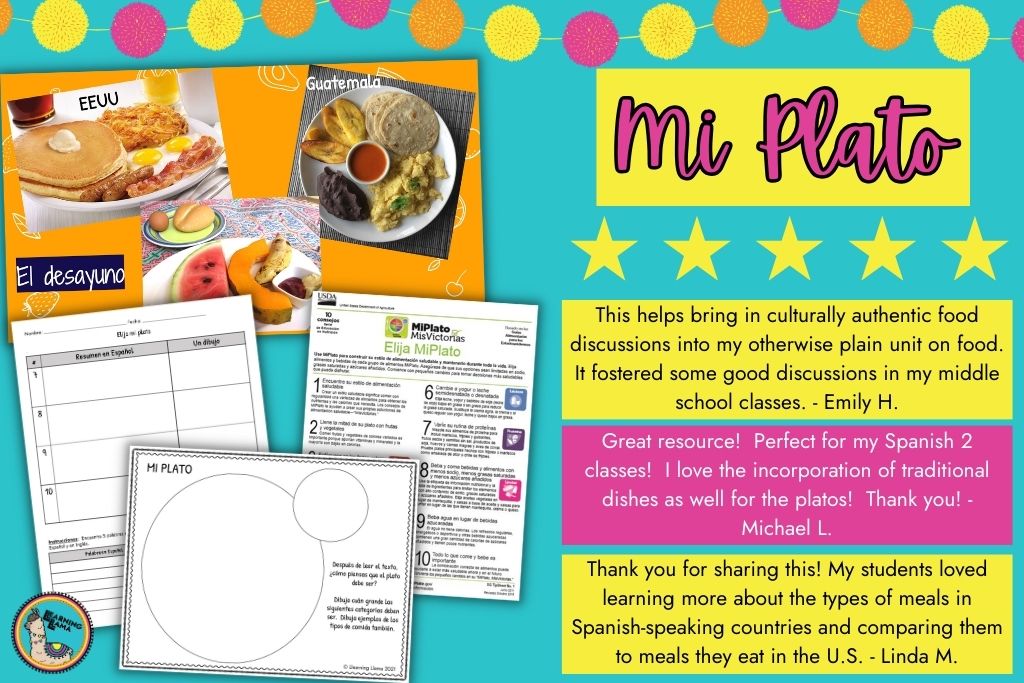
2. Comida callejera – Food in Spanish Speaking Countries
Street food is very popular in Latin America. Netflix even made a show about it! I wrote the curriculum for a course called Spanish 3: Hispanic Pop Culture, and devoted an entire week to comida callejera. YouTube is filled with lots of great videos about different types of street food. I even used this bracket from Netflix and video to have my students vote on their favorite street foods. Although we couldn’t taste them, we learned about them and guessed which foods we would like most. Here is a trailer for Netflix’s show.
3. Which Food Am I? Personality Quiz
Are you vanilla ice cream or a spicy taco? Maybe you’re a classic apple pie? Take this 10-question novice level Spanish quiz to find out. Your students will absolutely love the fun Buzzfeed personality quiz questions and will eagerly wait to see their results. Plus, students can work together in extension activities for discussions and presentations about their personality type. This is a great tie-in to a personality unit! Learn more about using personality quizzes in Spanish here and to see other quizzes like which alebrije are you or which famous Hispanic are you.
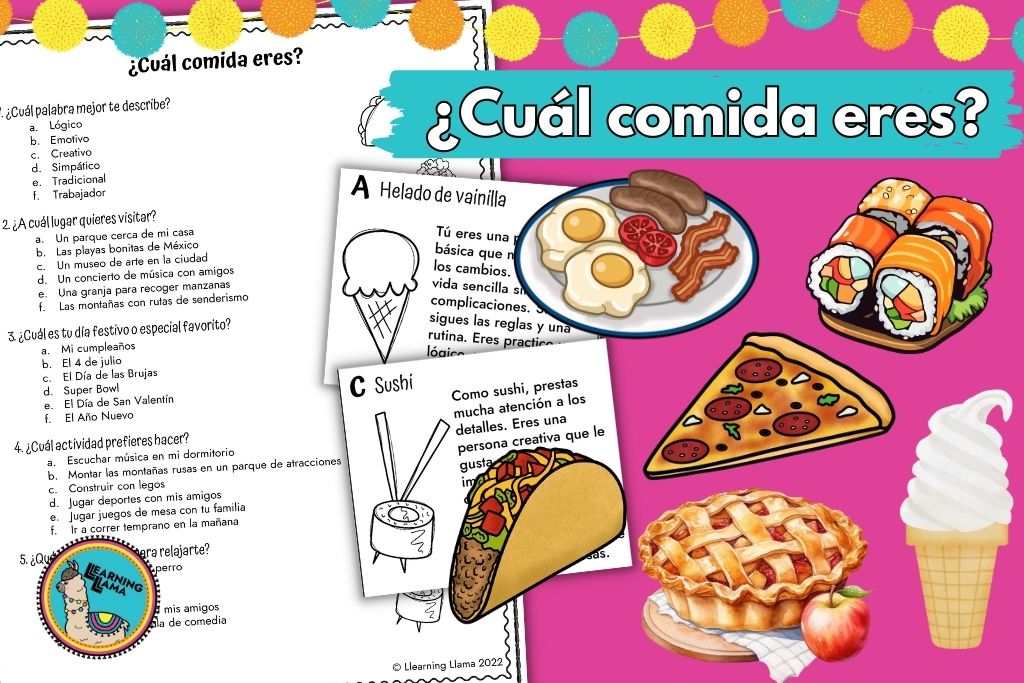
4. Commercials and Advertisements
Watching commercials or reading print ads about food is a great cultural activity. Find resources that promote authentic, traditional foods in Spanish-speaking countries. You may even find products that can be found in the international aisle of your local grocery store. I’ll never forget when I went to ShopRite back in New Jersey after my trip to Peru in 2018. I saw Inca Kola on the shelf, after tasting it in Peru! I never would have thought that was possible! Here are some great commercials to use with your students:
- Oro – a soda delivered to the Incas at Machu Picchu
- Plátanos de las Canarias – Igual no te da igual
- Galletas María – Fontaneda – Then see if they can find these or similar cookies at your grocery store!
You can also find images on Pinterest or in your own travels of print ads for food and beverages.
5. Escape Room
Imagine you are locked in the cafeteria after school… you have to solve 5 puzzles to unlock the door! This Comida Escape Room is perfect for novice high students. They will interpret a menu and costs, categorize foods based on food group, decipher a family group chat about dinner, learn about traditional Hispanic foods, and match descriptions of common foods with the vocabulary term. Can you beat the clock? Learn how to use and create escape rooms here.
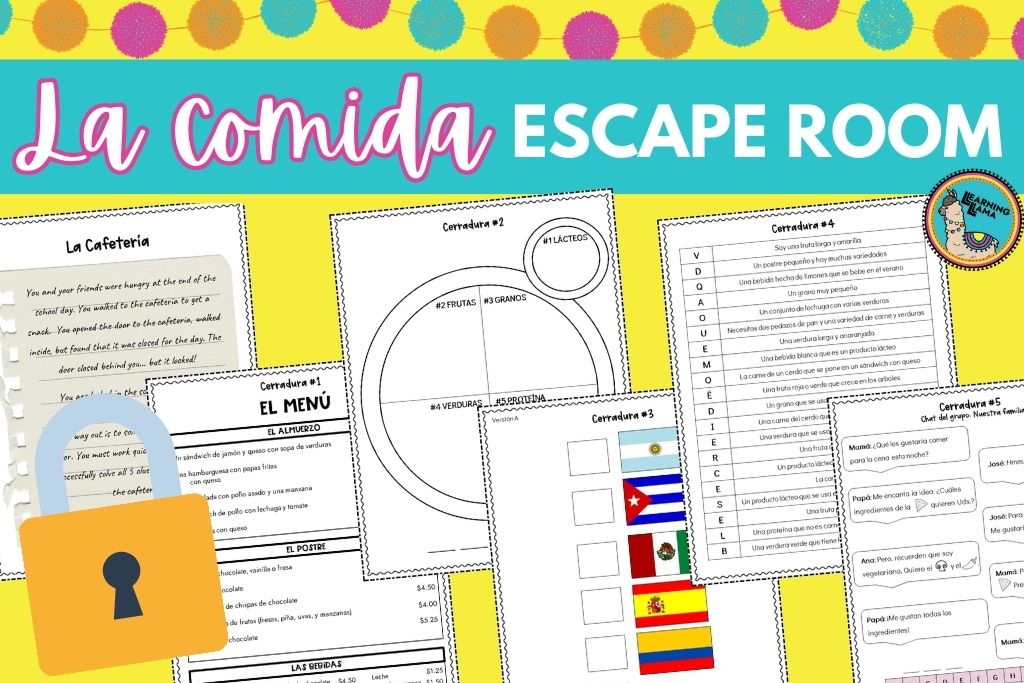
6. Recipe Interpretive Tasks
Recipes are a perfect authentic resource for novice learners. They are simple and use a lot of numbers and few words. If you pre-teach the main ingredients in a dish, your students will be able to interpret a recipe with no problem. Plus, this is the ideal time to teach commands, as recipes are written in that form! You can find recipes for any Hispanic dish online.
7. Restaurant Simulation – Order Food in Spanish!
After you teach the words needed to survive and order food in a Spanish-speaking country or restaurant, now you need to have your students put their knowledge to the test. I remember during my first year teaching, my mentor was a French teacher. On the day of her restaurant simulation, she transformed her classroom into a French cafe, complete with tablecloths, menus, and music! Students felt like they were really at a restaurant! They took turns acting as the waiter or the customer. Each student asked and answered questions in the target language. There is something about changing the environment that makes students stick to the target language more!
At the end of the food unit, you may want to assess students’ proficiency levels with an Integrated Performance Assessment (IPA). This 3-part proficiency based assessment for novice low students has students interpret a menu, write an email to the restaurant giving their opinion, and discussing their food preference/ordering a meal. All authentic situations – all proficiency based! Learn how to administer IPAs here.
To add more to this lesson, have your students make their own menus! Then, you can use those menus for your students to practice ordering food!
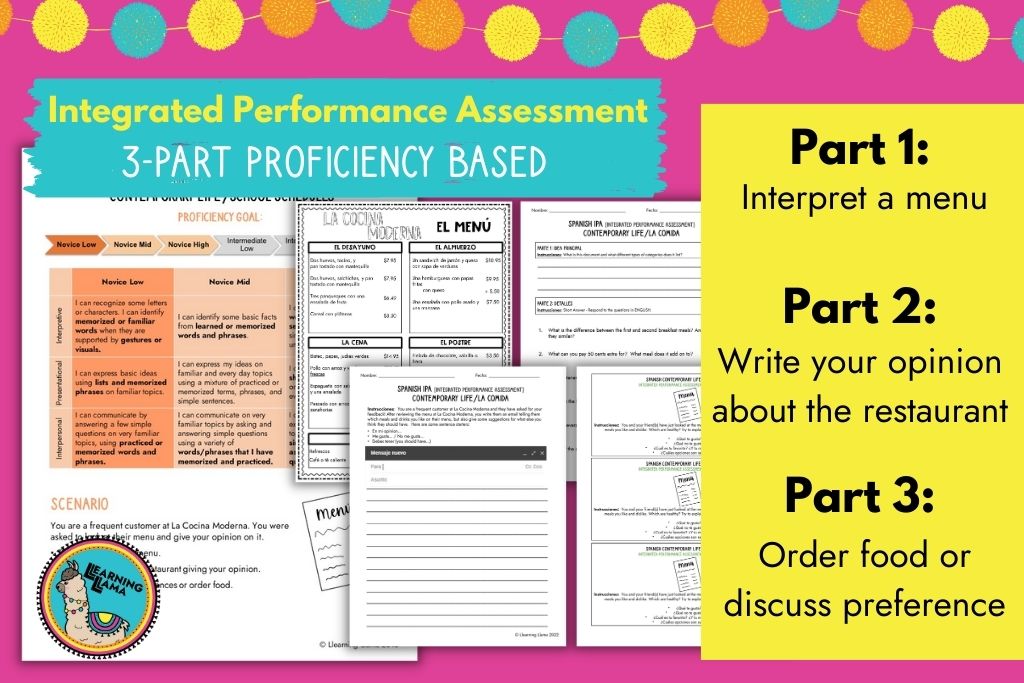
8. Prepositions of Place
A great way to incorporate grammar or additional vocabulary is with a preposition grid. Review prepositions of place with this fun fruits and vegetables activity. With multiple types of activities, students can practice listening, writing, and speaking with their fruits and vegetables vocabulary. Identify where each food item is on the grid based on prepositions of place!
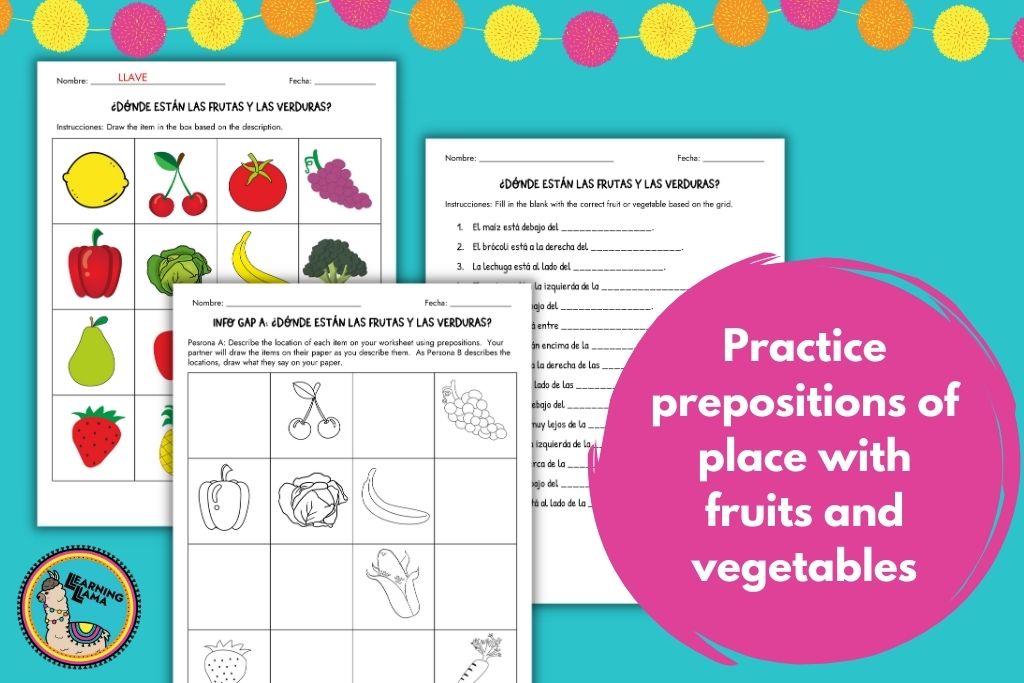
9. The Legend of Corn from Bolivia
Many years ago, a husband and wife, along with their tribes were defending their land in current-day Bolivia from the Spanish colonizers. An arrow was accidentally shot at the wife, killing her. When her husband buried her, his abundant tears watered the ground above her tomb, causing a new plant to grow… corn! He realizes how this plant resembles his beautiful wife, and it grows and expands across the Americas.
Share this fun, cultural story with your students! With this resource, you get 3 differentiated versions of the text (present, past simplified, past), pre-reading, vocabulary, comprehension questions, images to retell the story, and more!
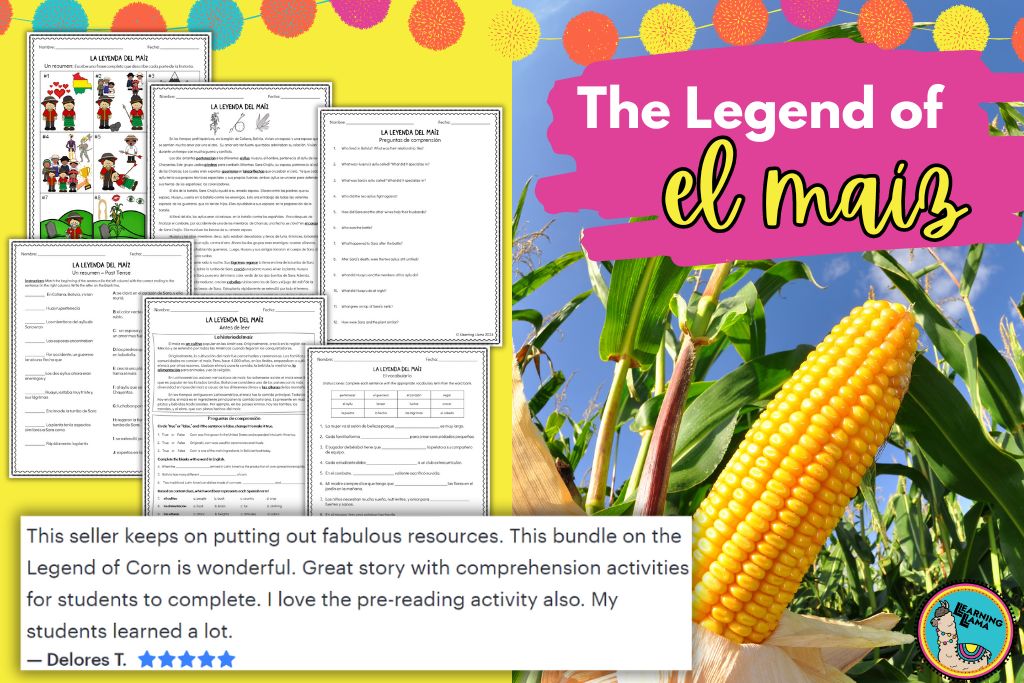
10. El sancocho del sábado
This children’s book (in Spanish) written by Leyla Torres tells a beautiful, cultural story about a family making traditional sancocho. The family does not have all of the ingredients, so they must go to the local market and bargain/exchange for the ingredients. The story also ends with an excellent recipe for sancocho.
I love using this book when introducing a unit on the market. We read the story, watch authentic recipe videos on YouTube, identify a grocery list of ingredients, and retell the story in our own words!

11. Traditional Foods in Spanish Speaking Countries
The list is endless, but chocolate, asado, paella, mofongo, mole, empanadas, etc. are great examples of traditional foods that you can teach your students about. Don’t pick too many, but focus on a few. Find authentic resources like YouTube videos, recipes, infographics, restaurant menus, a Duolingo podcast (I like this one about Mofongo) etc.
You could even let students do their own research on a traditional Hispanic food to present to the class. They can answer questions like: Where is it from? What are the ingredients? Where is it popular? What is your opinion of it? Then, after each student presents, they can all vote on the food they most want to try! If you’re able to make some or have a local restaurant donate the winning dish, your students will get to taste it! Here is a premade set of 25 traditional Hispanic food research posters for students to complete – in English, Spanish, PDF, and digital – no matter what level you teach, your students will love these posters!
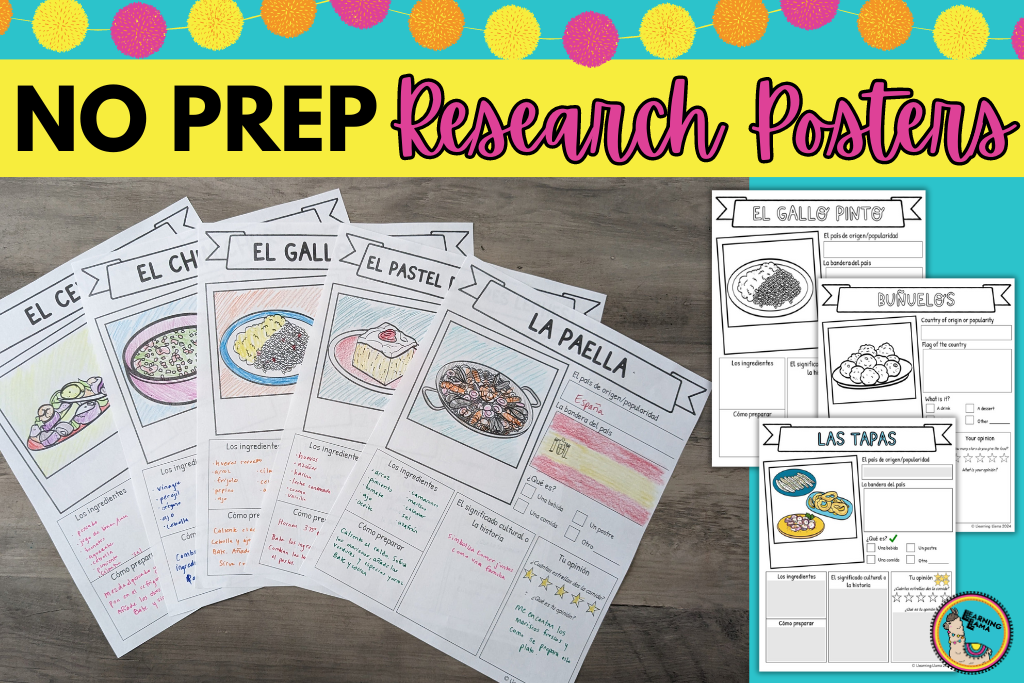
12. Infographics
Here is my Pinterest board for La comida in Spanish class. It is filled with infographics, menus, and other authentic resources. I love using infographics as an authentic resource to capture my students’ attention. They are brief enough with just the right amount of text and visuals. Check out the infographics I saved about tortilla española, tacos, cacao, empanadas, mole, and more! And learn how I use Pinterest to find authentic resources for any content when teaching Spanish.
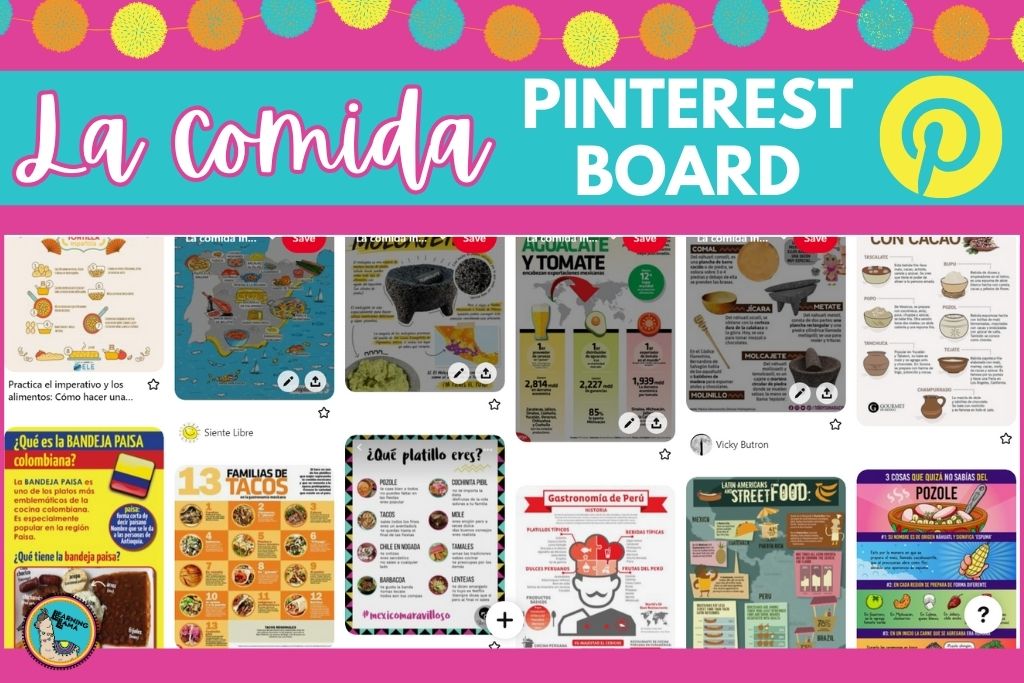
13. Cooking Videos
You can find so many authentic videos on YouTube. Just search the name of the food. For example, try searching “asado argentino” and you’ll find videos about cooking asado like a professional, asado champions, small family gatherings, recipes for chimichurri, and thousands more results!
A great channel is De mi rancho a tu cocina and it is an abuela from Mexico who shares her family recipes. They are short, authentic videos that are filled with culture!
14. Food Festivals
Food is not just something we eat, but something we use to celebrate! Teach lessons about fun food festivals from the Spanish-speaking world. Your students will be thoroughly engaged. La Tomatina occurs every August in Spain and is a large tomato fight in the streets of Buñol. Here are 7 ways to teach about La Tomatina. Another fun food festival, La Noche de los Rábanos takes place in Oaxaca in December. Artisans carve elaborate statues out of radishes and put them on display in the town! The Mistura Festival is the largest food festival in South America. Taking place in Lima, Peru, it is a 10-day festival where all of Peru shares its love of food with the world. These festivals are both a treat for the eyes and the mouth!
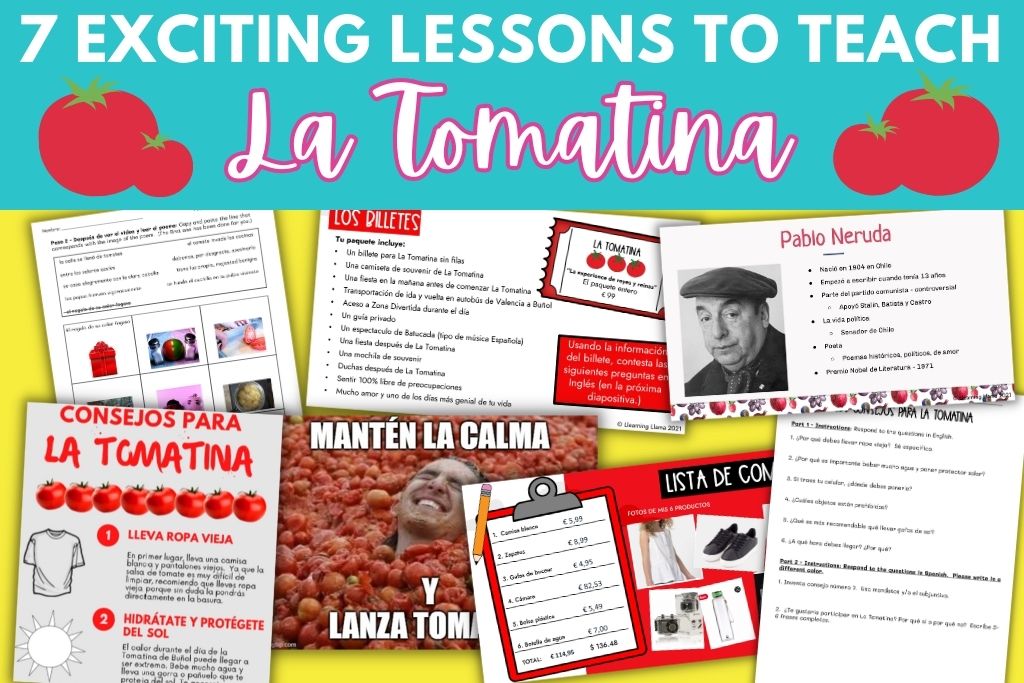
15. Food Diary
Sometimes, I taught food along with a health unit, and we focused on healthy eating habits. When I taught middle school, I had students keep a food diary for one week so they could then compare their eating habits to Mi Plato. You can also just have them keep the diary to practice vocabulary. Here is a Spanish digital food diary with extension activities!
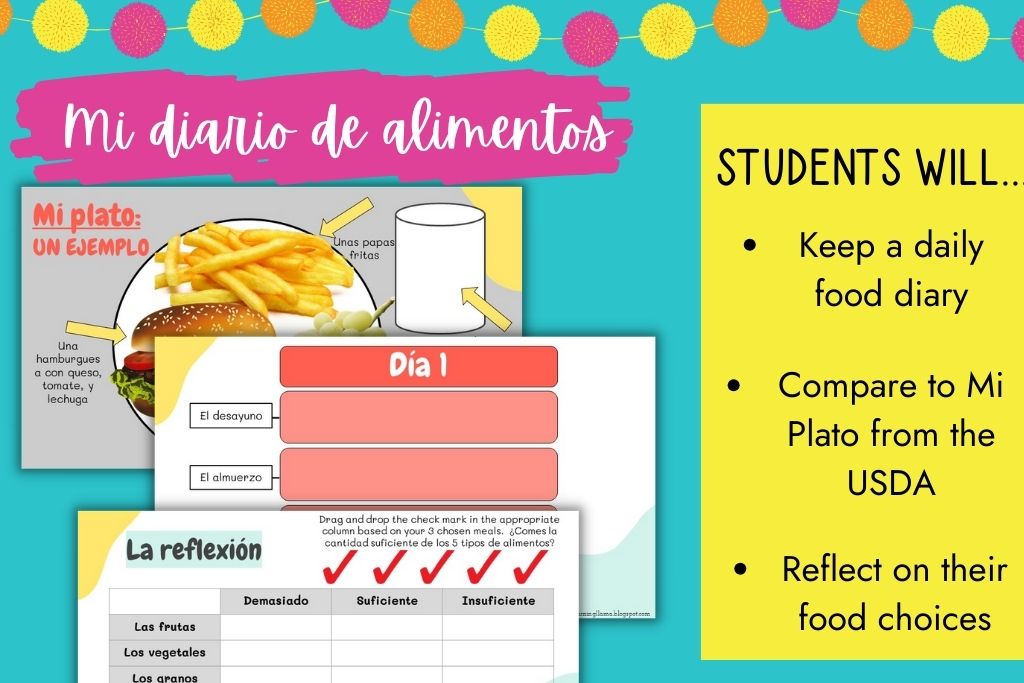
By now you’re probably hungry! And I hope you have saved a bunch of these ideas for future food lessons! If you are interested in my food activities, save money with a bundle of 8 unique activities to teach about food in Spanish class.

